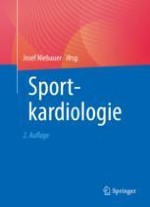2023 | OriginalPaper | Buchkapitel
16. Spiroergometrie
verfasst von : Victor Schweiger, Manfred Wonisch, David Niederseer
Erschienen in: Sportkardiologie
Verlag: Springer Berlin Heidelberg
2023 | OriginalPaper | Buchkapitel
verfasst von : Victor Schweiger, Manfred Wonisch, David Niederseer
Erschienen in: Sportkardiologie
Verlag: Springer Berlin Heidelberg
Print ISBN: 978-3-662-65164-3
Electronic ISBN: 978-3-662-65165-0
Copyright-Jahr: 2023
